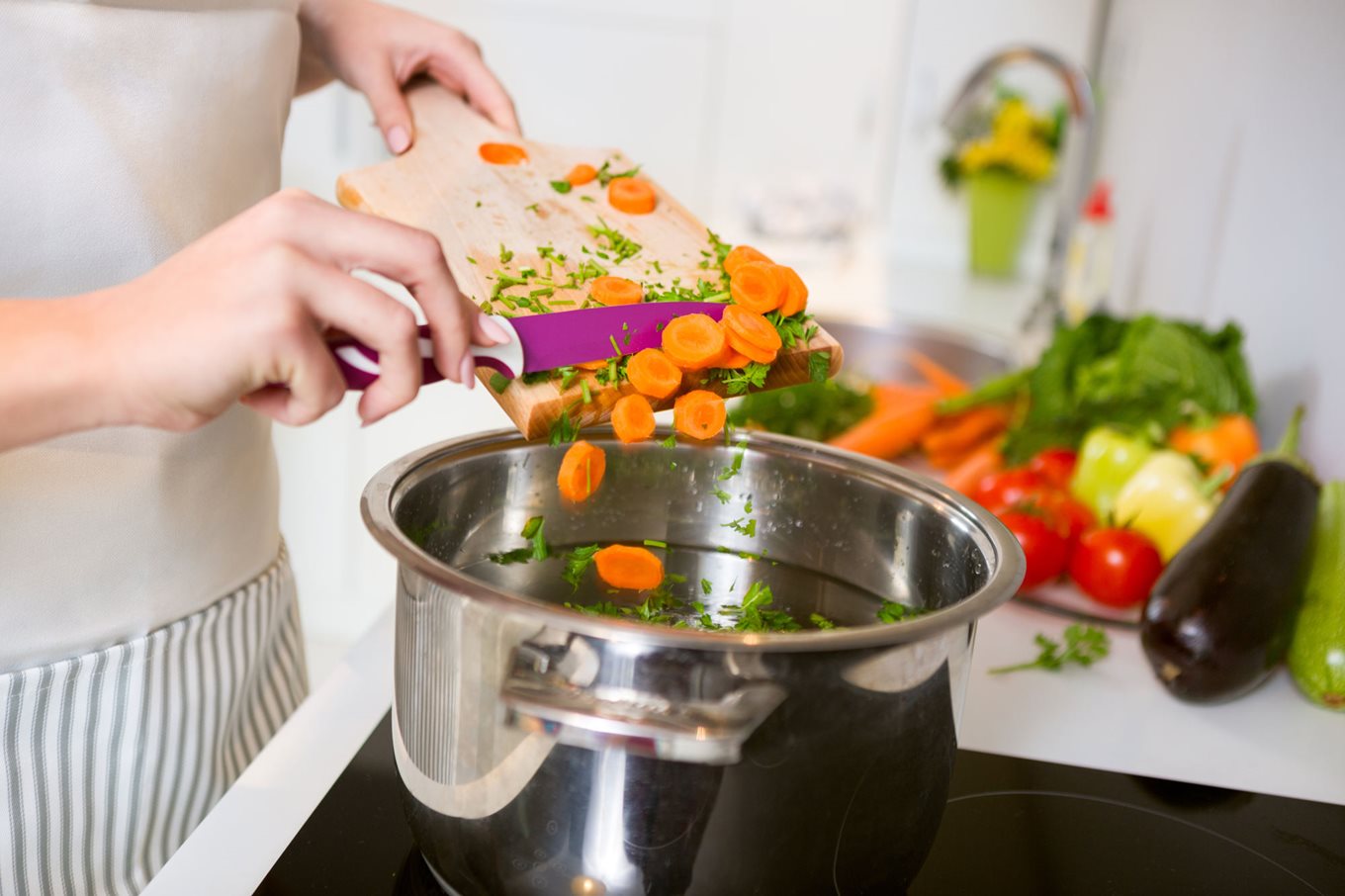How to cook fruit & vegetables safely

Vegetables can be exposed to bacteria through soil or water.
Fruit and vegetables are extremely versatile. Most can be eaten raw, cut up and served with dips, or grated into salads. Some need to be cooked to make them edible.
The risks associated with eating fruit and vegetables are low. Nevertheless, most are grown and harvested in a natural environment where they can be exposed to bacteria from the soil or water. Here are some steps you should take when preparing and cooking fruit and vegetables.
Wash fruit and vegetables before cooking or eating them
- Washing fruit and vegetables before eating them is good food safety practice.
- Make sure to wash all fresh berries, and other fruit and vegetables if eating them uncooked.
- It is very important to wash vegetables if there is any soil present, as soil may contain harmful bacteria.
- To wash vegetables, rub or brush them under a cold running tap.
Prepare vegetables just before you cook them, if possible
- This will prevent vitamin and mineral loss.
- Clean chopping boards and knives thoroughly between use.
There are many ways to cook vegetables
- Try microwaving or steaming them, instead of boiling or frying.
- Avoid adding salt, sugar, cream and sauces.
- Flavour your vegetables with lemon juice, garlic, ginger, pepper, and herbs or spices instead of salt.
How long do you cook vegetables for?
- This is down to personal taste, but bear in mind that the longer you cook them the more nutrients will be lost.
- Most people prefer to cook vegetables lightly, leaving them brightly coloured with a little "bite".
- Check to see if vegetables are cooked by piercing them with a knife or tasting them.
- When they are cooked, drain them and serve at once.
- If you want to serve them later, plunge them into cold water to stop them from cooking further. Then cook them again very briefly in boiling water when you are ready to serve.
Frozen vegetables
- Most frozen vegetables, including sweetcorn, spinach etc. will need to be cooked before you can eat them.
- If you intend to use frozen sweetcorn or other vegetables as part of a cold salad or smoothie, always check the instructions on the packaging first. If the advice is that the sweetcorn or other frozen vegetables should be cooked, you must ensure that this is done before they are eaten cold.
Frozen berries
- Imported frozen berries should be boiled for 1 minute before eating them or adding them to smoothies. This is because they have been associated with outbreaks of norovirus and hepatitis A across Europe in recent years.
- This is particularly important when serving them to vulnerable people.
Cooked vegetable leftovers should be:
- cooled down as quickly as possible (ideally within two hours)
- stored in a fridge
- eaten within three days.




